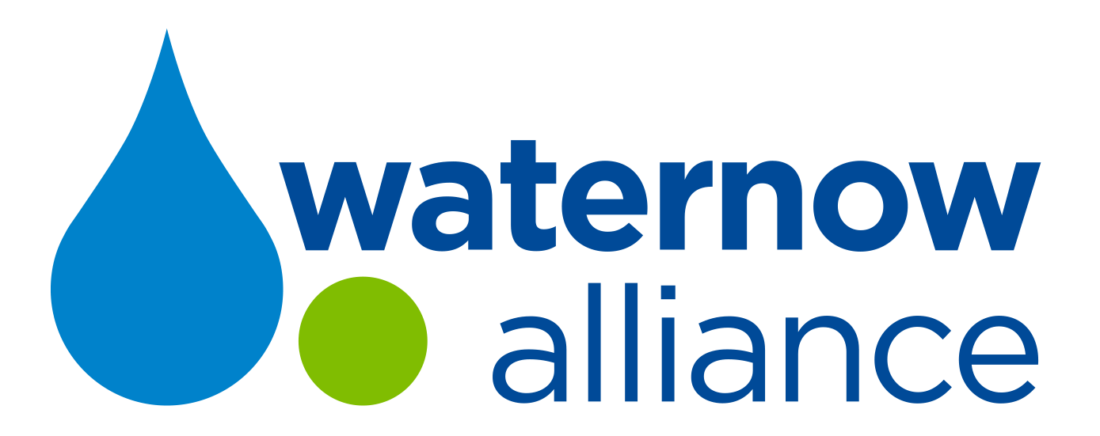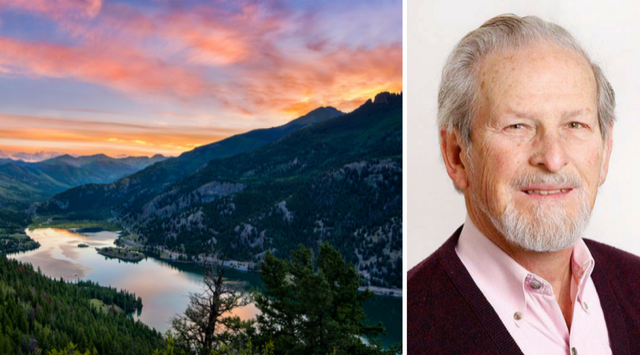Councilmember Dick White has served on the Durango City Council since 2011, including two one-year rotations as Mayor. He has also served on the boards of numerous organizations including the Southwest Colorado Renewable Energy Society, Durango’s Utility Commission, and the La Plata County Climate and Energy Action Plan, among others. Previously, Councilmember White was a Professor of Astronomy at Smith College where taught a course on climate change in 1995. He decided to take early retirement in 2002 to pursue a new career as a sustainability advocate. White has been a member of WaterNow Alliance since 2016.
WaterNow spoke with Councilmember White this week about his leadership efforts in encouraging sustainability and resiliency in Durango through innovative water, energy, and land use initiatives.
Why did you initially decide to run for office in Durango back in 2011? What issues were you most interested in focusing on if elected?
It was basically an organic outgrowth of the volunteer work I’d already been doing in the community on various committees related to sustainability and climate protection and adaptation. One of the sitting City Councilors suggested I run for office and the more I thought about it, the more it made sense.
I campaigned on the themes of climate protection, sustainability, and collaboration. I particularly wanted to encourage collaboration between the city and the county and regional entities. I’m happy to say that our relationship with La Plata County is as good now as it may ever have been.
Where does Durango receive its water supply from and how is water delivered from this source?
The City is fortunate to have held senior water rights on two local rivers since the 1880s – the Animas and the Florida River. We have a 9-mile pipeline from the Florida River that’s all gravity fed to our water treatment plant that provides most of the city’s needs. Once irrigation season kicks in we also pull water from the Animas River.
In the wake of a series of serious fires in 2002 - where both of the water sources were compromised by large amounts of ash - the City decided to purchase water storage in Lake Nighthorse to be used as an emergency back-up source. We’ll be able to use that water once we’ve developed a pipeline and a water treatment plant.
In addition to securing those water sources, what programs do you credit with helping Durango to manage its water more sustainably?
We want to ensure we’re using the water as efficiently as possible. We have an ongoing maintenance effort that’s been stepped up in the last six years to identify where all of our water is going in order to pinpoint and reduce water leaks.
Currently, we’re in the midst of an extremely dry year and we need to limit our water consumption at least until the monsoon rains come later this summer when – hopefully - the flows will be more secure. The City has contacted our largest water users (city parks, golf course, etc.) and has asked them to voluntarily cut back on 10% of their water usage. They responded positively and we’ve been able to save more than we could have saved by instituting an alternate day watering schedule. We have in place a series of additional conservation steps that we’re ready to deploy, including mandatory water restrictions, if that becomes necessary.
A few years ago, we also increased our rates and created a tiered water rates structure to prompt conservation by our heavier water users, particularly in the summertime. We saw an immediate decline in usage based on this rate change. I think customers are more mindful when they look at their utility bill.
Did you receive any pushback or complaints from ratepayers on the rate restructuring?
Yes, we received some complaints from customers. We not only restructured rates, we also raised the rates to cover the cost of the new water plant we will be building so water rates are pretty high right now. There are some people who say, “you really don’t need all this money and you’re just gouging the citizens”.
We all gasp sometimes at our utility bills but when you’re on the inside you understand the motivations behind the decisions. Rates allow us to systematically try to take care of our community by ensuring adequate water and sewer infrastructure, now and into the future. It’s not sexy but it’s absolutely essential.
As a result of the rate change, some people decided to change out their lawns and switch to low water use landscaping and xeriscape. I think more people will decide to do that in the future.
How do Durango’s water utility staff and councilmembers work together in making important decisions about the utility?
The main vehicle for that collaboration is our 5-member volunteer Utilities Commission. I’ve been serving as the city council liaison to that commission for the last 6 years. Sometimes their purpose is mainly just informational, but we have a rate study coming up in 2019 and a new water treatment plant where some significant review from that commission will be extremely valuable. Officially they are advisory to the council but it’s really a collaborative relationship.
Durango has 100+ citizen volunteers who serve on various commissions. The City Council finds their input extremely valuable because we don’t have the time to devote to each issue and they do some heavy lifting in sorting out our community’s priorities. And since the commissions aren’t term-limited, they can bring a lot of institutional knowledge to the Council.
You’ve been very active in working on Durango’s sustainable energy initiatives. What is the City doing to mitigate and prepare for the effects of climate change in its energy sector?
Durango developed a Sustainability Action plan for internal operations which included a number of energy efficiency upgrades as well as a biodigester to help provide power to the wastewater treatment plant. We’re also looking at the potential for solar energy on city rooftops or possibly hydropower from our water system. This October, our building code will be updated to the 2015 International Energy Conservation Code.
We also joined the Compact of Colorado Communities last year which is a new group focused on training city councils and staff on climate initiatives so there’s an institutional knowledge base and human capital that can be leveraged going forward.
Last year, the City of Durango approved an updated comprehensive plan. How does this plan account for sustainable land, energy, and water management?
The City’s comprehensive plan specifically articulates concern about water supply and the need to integrate our attention to water supply with the pattern of development. The main thrust of the plan in terms of land use is to implement denser development within the city limits and in the immediate vicinity because that’s what we can serve with our resources. In the energy arena, we have a strong transit system and an expanding trail system. We have to get people out of their cars. Within the city, we’re trying to make sure that people can live where they don’t have to be in their car to get to work.
Why do you think that sustainable water management in Durango and Southern Colorado is so important? And what are the main challenges to achieving a sustainable water future?
We live in an arid region. Water is life. We need water for agriculture to grow our food and we need water to support our municipal and industrial needs. This is true across the West.
I think the biggest challenge is the projected population growth – both the state and in our county we’re looking at doubling the population over the next generation. And then, as members of the Colorado River Compact, we know that there’s only so much water going from our mountains into the Colorado River watershed. Finally, you throw in the impact of climate change. What if this incredibly dry winter of 2017-18 that we experienced becomes the new normal in the next generation? Is what we regard in Durango as a very secure water supply going to be enough 20 years down the road?
The one thing about climate change is that it’s happening slowly but it’s not like it’s off in the future. It’s happening now. Unfortunately, climate change has become a politicized, dogmatic issue. I think Governor Hickenlooper has done a good job of adapting to this politically charged conversation and saying, “are you in support of a reliable, clean water supply? Are you for clean air?” Everyone is going to agree on these things.
Finally, what do you think are the most promising strategies for addressing these challenges?
I think the framework that we have to be looking at is the Colorado Water Plan developed under Governor Hickenlooper in 2015. The plan outlines improvements in water efficiency, selective water reuse, flexible transfers of water rights between agricultural users and others to avoid buy and dry, and land use regulations. There’s a lot of investment needed that hasn’t been identified yet but it’s clear that we need to be pursuing these strategies. If we’re not paying attention we’re going to get into situations where the water just isn’t there.
When I went to the WaterNow Summit two years ago, water reuse and some of these other strategies were very much a part of the conversation especially in California because of the horrendous drought the state was in. But I think we’re all going to have to get there.

